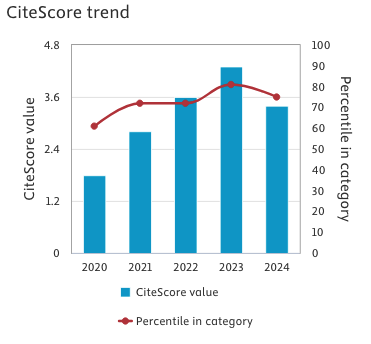Global Shifts in transfusion-dependent thalassemia (TDT): Epidemiological trends, regional disparities, and prevention strategies (pre-2010 vs. 2015–2021)
Keywords:
Global Shifts , beta thalassemia , Epidemiological trends, regional disparities, prevention strategiesAbstract
The global epidemiology of β-thalassemia major has shifted considerably over recent decades, reflecting the success and limitations of prevention programs across regions. Mediterranean nations such as Cyprus, Greece, and Italy have markedly reduced affected births through universal carrier screening, premarital counseling, and accessible prenatal diagnostics, providing effective models for high-prevalence regions. In contrast, South Asian countries including India and Pakistan continue to face a substantial disease burden due to high consanguinity rates, inadequate public health infrastructure, and limited access to genetic services. Although incidence is declining in Southeast Asia, particularly in Thailand and China, the large population base sustains a significant absolute number of cases. New clusters are emerging in Northern Europe and Latin America as a consequence of migration from endemic areas, underscoring the need to adapt screening and counseling programs even in historically low-prevalence regions. In North Africa, notably Egypt, moderate increases are reported, especially in underserved rural communities where screening access is restricted. The global carrier state varies widely, ranging from <1% in non-endemic areas to >10–14% in South Asia, the Mediterranean, and the Middle East. Addressing these disparities requires region-specific strategies combining community-based education, culturally sensitive counseling, premarital or antenatal screening, and integration of genetic services into primary healthcare systems.
References
1. De Sanctis V, Soliman AT. Endocrine complications in thalassemia major: growth, GH–IGF-I axis, and puberty. Endo-Thal Riv Ital Med Adolesc. 2020;18(3):1-4.
2. Colah R, Gorakshakar A, Nadkarni A. Global burden, distribution and prevention of β-thalassemias and hemoglobin E disorders. Expert Rev Hematol. 2010;3(6):103–17. doi:10.1586/EHM.10.92
3. Cousens NE, Gaff CL, Metcalfe SA, Delatycki MB. Carrier screening for beta-thalassaemia: a review of international practice. Eur J Hum Genet. 2010;18(10):1077–83. doi:10.1038/ejhg.2010.71
4. Tuo Y, Chan K, Li J, Wang Y, Tanaka Y, et al. Global, regional, and national burden of thalassemia, 1990–2021. eClinicalMedicine. 2024;73:102123. doi:10.1016/j.eclinm.2024.102123
5. Kattamis A, Forni GL, Aydinok Y, Viprakasit V. Changing patterns in the epidemiology of thalassemia. Br J Haematol. 2020;190(3):323–34. doi:10.1111/bjh.16783
6. Forni GL, Cappellini MD, Taher A, et al. Global burden and unmet needs in the treatment of transfusion-dependent β-thalassemia. Front Hematol. 2023;8:1187681. doi:10.3389/frhem.2023.1187681
7. Li B, Liu Y, Chen Q, et al. Prevalence, mutation distribution, and economic burden of thalassemia in China: a systematic review and regional analysis. Front Public Health. 2025;13:11972477. doi:10.3389/fpubh.2025.11972477
8. El-Beshlawy A, Elalfy MS. Management of transfusion-dependent β-thalassemia (TDT): A practical overview. Transfus Apher Sci. 2024;63(2):103845. doi:10.1016/j.transci.2024.103845
9. World Health Organization, Regional Office for South-East Asia. Prevalence and burden of thalassaemia syndromes in Southeast Asia. New Delhi: WHO Regional Office for South-East Asia; 2021.
10. Musallam KM, Rivella S, Taher AT, et al. Epidemiology of clinically significant forms of α- and β-thalassemia: A systematic literature review. Am J Hematol. 2023;98(1):24–41. doi:10.1002/ajh.26703
How to Cite
Issue
Section
License
This is an Open Access article distributed under the terms of the Creative Commons Attribution License (https://creativecommons.org/licenses/by-nc/4.0) which permits unrestricted use, distribution, and reproduction in any medium, provided the original work is properly cited.
Transfer of Copyright and Permission to Reproduce Parts of Published Papers.
Authors retain the copyright for their published work. No formal permission will be required to reproduce parts (tables or illustrations) of published papers, provided the source is quoted appropriately and reproduction has no commercial intent. Reproductions with commercial intent will require written permission and payment of royalties.






